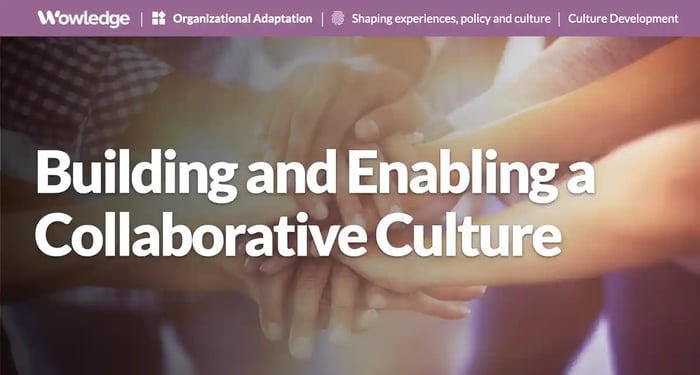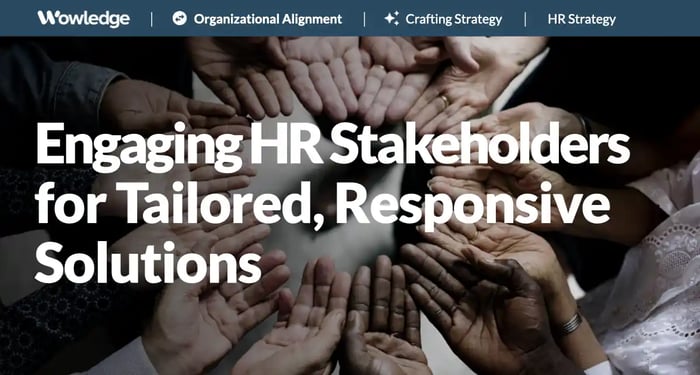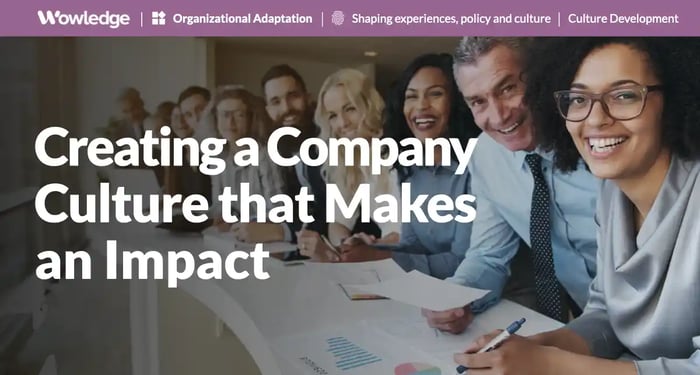Collaboration is a joint and common effort in organizations and one that has taken on a new level of interest given 1) its value to better problem solving, b) teamwork issues related to the movement of people into remote or hybrid environments, and c) the increased calls for more agile problem solving and decision making. As a natural element of working in any group or organization, its use is too often characterized by a lack of adequate understanding and structuring for success. Considering the preparation, planning, and process execution steps that successful athletic teams, music groups, and corporate project teams have had to go through to generate success, understanding what makes for a great cooperative effort is critical. Establishing a collaborative culture is an essential driver of business success.
The recent shift towards remote work has significantly reshaped collaboration. While the effects of hybrid work on innovation, employee engagement, and well-being have been the subject of mixed reviews, it also presents an exciting opportunity. This shift allows us to rethink how we bring the right people together and drive problem-solving and innovation, potentially leading to new, more effective collaboration methods.
This is what defines a collaborative culture
Collaboration occurs when any number of employees interact to discuss or work together to solve a problem, resolve an issue or challenge, improve a process, or create something new and innovative. It can be done in many ways, but the core concept is the a) collection of multiple inputs, b) leveraging of diverse backgrounds, education, levels and types of experiences, perspectives, functional expertise, strengths, and styles, c) processing those inputs to increase understanding and d) coming to a joint conclusion as to the best method, design, or redesign to resolve or manage the challenge at hand. It can be as simple as a hallway conversation, an email or text exchange, or as formal and complex as a multi-functional project team using external consultants to provide added insights.
A collaborative culture is a natural part of organizational life and an essential element of work experience. It builds on the basic premise of bringing people together to achieve greater ends than those possible by a single person. Working together in a series of interconnected processes toward a common objective brings purpose and meaning to any organization and its individuals and teams.
The prevalence of workplace collaboration
Estimates of workplace collaboration vary from 85% of an employee's workweek down to 42% of an average employee’s work hours. The extent to which collaboration is embedded in the work process may be a function of the industry and growth stage. For example, 83% of “digitally maturing” companies are observed to rely on cross-functional teams. In comparison, over 50% of workers across the U.S. report that their jobs require/rely on collaboration.
McKinsey’s research provides a nuanced look with its finding that workers who rely on interactions to perform their tasks (doctors, lawyers, teachers, etc.) spend an average of 28% of their work time handling e-mail, plus 20% looking for internal information or tracking down co-workers who could assist with specific information and insights. This is supported by the preponderance and use of knowledge management (KM) systems in large consulting, IT, and engineering companies and scientific research databases in the medical, pharmaceutical, and academic communities where a collaborative culture relies on previous experience and expertise sources to inform their work. With a reported 79% of workers using some digital collaboration tool, we can assume that more and more organizations now rely on knowledge sharing to drive improvements and results.

How and why collaboration is so valuable
The value of collaboration has been demonstrated to be substantial at both individual and organizational levels. At the individual level, relying on advice from more (or differentially) experienced colleagues provides time-saving insights that increase work quality and efficiency. For organizations, s collaborative culture produces a distinct advantage in business outcomes. For example:
Individual outcomes
A compilation of collaboration studies found that:
- Employees working in collaborative environments are over 50% better than those who work on their own at completing work tasks
- Top performers spend 45% of their time in collaborative activities
- Employee satisfaction is 17% higher when they can collaborate with co-workers
- Workers in companies where collaboration and communication are heavily promoted and supported are 50% less likely to quit
- 75% of employees report that teamwork and collaboration are critical to their success
Business outcomes
Numerous studies have linked increased levels of employee collaboration with significant impacts on the most desirable business and financial outcomes. For example, one particularly robust study found that those with a highly collaborative culture:
- Generate 27% higher sales, 41% higher customer satisfaction, 34% higher product quality, and 30% more successful product development.
- Have practices, policies, and programs that together are responsible for 36% of its total performance (including profitability, sales growth, productivity, customer satisfaction, innovation, and product quality).
Unsurprisingly, yet critical for understanding is the finding that well-staffed project teams made better decisions than a solitary employee 87% of the time. Another study found that teams that improved their collaboration practices and behaviors could improve their productivity by 39%.
More evidence tells us that organizations that actively use, promote, and support collaborative efforts generate five times (5X) the performance rates compared to other companies. Similarly, Gallup has found that greater team engagement and participation levels predict 21% higher productivity.
The purpose of enhancing and optimizing collaboration
The benefits of a collaborative culture may be clear after reviewing the evidence above. Still, the reasons for creating an enterprise-wide effort to formalize, leverage, and optimize collaboration should be defined and tailored to the mission and objectives of any given organization, business unit, or function. Clarity for leaders and employees is essential to increase their awareness and willingness to learn and engage in more formalized and structured approaches.
Improving communication and coordination
Whether within or across teams, the value of formalizing opportunities for sharing ideas, raising issues that impact performance, and working together to improve work and hand-offs in shared processes can drive substantial awareness and coordination in product or service management. Opening up lines of communication, especially across organizational boundaries, helps build stronger working relationships and a collaborative culture.
Achieving common goals and objectives
Working together (rather than in silos) is a core aspect of teams' and sub-team’s operations. Consider the sales team that provides unique insights into customers’ product or service preferences and feedback to the marketing or delivery teams. Or the software product team whose developers and testers share critical requirements and timelines to prepare each other better to meet delivery deadlines.
Driving innovation
Collaborative work can bring many ideas, methods, perspectives, and experiences to bear on a targeted problem or challenge. More creative applications of existing methodologies (e.g., from lean manufacturing to merit pay process improvement) or customer insights (e.g., customer support or complaint department sharing data with the product development or sales teams) can bring better and more effective solutions. The energy that can result from bringing experts from various departments together to resolve an issue they all suffer from can invigorate them and their peers.
Increasing development and efficiency
Bringing employees together to compare notes, share insights, and explore more effective and efficient methods of dealing with issues and solving problems acts to syndicate and spread expertise across the enterprise. It is an informal learning and development methodology that develops individual skills while helping them bring more efficient and effective work processes and methods to their organizations.
Building networks and bonds with the larger organization
Collaboration within and across departmental, business unit, and functional lines creates a stronger sense of community and connection with other employees and the organization. It can drive awareness of how different parts of the organization function and feed each other and how the individual’s role and department fit into the larger purpose and mission. This helps provide an essential element of employee engagement and productivity - the “meaningfulness” of their work.

Types of collaboration
Collaboration comes in many forms and occurs either organically or by design. At its most basic level, it happens in response to a need—where one person is unsure how to proceed with a task or handle a work issue or where leadership has identified a larger issue and determines that a group approach should be employed. In either case, two or more people will be engaged to help create a solution. A collaborative culture acknowledges and supports multiple types of interactions at every level of the organization.
The most common examples of approaches include:
A) Individual or one-to-one
An individual who needs support or insights is paired with an expert with more experience, education, skills, or training. An example is pairing individuals for mentoring or coaching on a specific topic, such as skill acquisition or enhancement, career progression, problem-solving, etc.
B) Departmental or functional project teams
Individuals volunteer or are selected based on their needs, interests, or experience. An example is a new system configuration and implementation within a corporate function.
C) Cross-functional task forces
Individuals identified from various functions or subfunctions to address a pressing need or issue affecting a broader array of functions or businesses. An example is a cross-section of functional experts working to understand and design a solution to sagging customer product or delivery timeframes, including sales, operations, distribution, and supply chain management.
D) Internal social or open-source collaboration
Getting input from employees who have ideas or are willing to provide input to a selected challenge. An example is posting a challenge on the company collaboration platform, asking for ideas and suggestions on designing a hybrid onsite/remote work policy that meets certain purposes and minimum requirements.
E) Open, community-based collaboration
Bringing together experts from both employee and partner (e.g., supplier) organizations, professional networks (e.g., local or national professional associations), and even leaders or members of the local community. An example might involve soliciting ideas and input via a crowdsourcing campaign for creative uses for under-utilized corporate facilities and resources.
Other elements that can differentiate collaborative interactions include the extent to which they will be conducted in a live, virtual, or blended approach. With the rapid growth and preponderance of collaboration platforms since the pandemic, opportunities abound where individuals from across the globe and corporate functions can be quickly identified and connected. Add to that the deployment of systems dedicated to knowledge management (KM), expert locators, coaching and mentoring matches, etc., and a range of options supportive of collaborative relationships and opportunities abound.
The rapid growth of digital collaboration platform adoption, estimated to have increased by 44% between 2019 and 2021 alone, has dramatically expanded the opportunities to use both synchronous (input and sharing that is live, together) and asynchronous (input and sharing that is provided at varying times and locations) sharing. Given the wide adoption of hybrid work schedules and geographically dispersed workforces, the opportunities for blending those types of collaboration are substantial.
Common issues found with collaboration strategies
As with any talent-based strategy, there are no perfect solutions. Organizations should remain aware and vigilant to the issues that can commonly crop up with teamwork and collaboration efforts in the current environment. Establishing and maintaining a collaborative culture requires due diligence and awareness of issues that can derail those efforts.
1. Unbalanced contributions
Some participants will contribute more than others in any group effort, from school projects to large enterprise-wide improvement design initiatives. Establishing standards and expectations and judiciously assigning tasks based on each team member’s skills are critical to starting on the right foot. Project managers should remain alert to missed deadlines and slow progress from each team member.
2. Ineffective meeting management
Team meetings can become burdensome and non-productive if one fails to design them to efficiently cover the most pressing topics, engage every team member, and provide accountability checks, barrier identification, and brainstorming opportunities. Leaders should solicit anonymous participant feedback to optimize meeting management and use participants’ time and effort. Attention should be paid to remote team members' participation and engagement levels to ensure their participation and input are actively and equally included.
3. Worker dissatisfaction with low collaboration
64% of workers report losing three (3) or more hours per week of productivity due to poor collaboration (and 20% lose six hours per week), and 41% of employees have either left or considered leaving their employer due to poor collaboration. The lack of collaboration between co-workers, departments, and functions creates inefficiencies, lost business opportunities, and employee dissatisfaction and unrest.
4. Managing hybrid or remote participants
The research is mixed on the impact of hybrid and remote work arrangements on collaboration. One study found that 36% of employees feel remote work harms collaboration. And yet another found the opposite, with 80% of employees believing remote work collaboration is either better or just as good as in-person. Other research found that collaborative behavior decreased as the number of days in the office decreased. The concern is that too many remote days (especially when the onsite days vary by individual) lead to less interaction and fewer opportunities for hallway or “water cooler” discussions between departmental colleagues and those outside the individual immediate work group.
5. The risk of over-collaboration
In seminal research by Rob Cross on “collaboration overload”, it was reported that managers and employees spend as much as 80% of their time in meetings, on the phone, and responding to co-workers via e-mail, leaving precious little time for independent task completion. It further discovered that 20-35% of the genuinely value-added input was provided by the same 3-5% of employees, placing great pressure and time commitment activity on a handful of true “experts.” Those few super-collaborators often ended up being bottlenecks. The takeaway? Stay close to each team's process and methodology experts and monitor the time they report being able to conduct their own work.
Guidance for creating a robust and efficient culture of collaboration
Developing a healthy and highly collaborative culture and environment can be challenging, but as we’ve seen, it can generate extensive gains in individual productivity, engagement, and business results.
Establish a strategy and engage top leaders
To build a collaborative culture, develop a strategy that engages and encourages leaders, subject matter experts, and tenured employees in every function, skill set, and business unit to participate actively in expertise sharing. Have leaders create cross-functional teams or “solution days” to solve business challenges and issues, refine critical processes, and address customer or shareholder concerns. Reward and recognize those teams or groups for producing winning solutions and contributions.
Get the right people together
When forming project teams or solution groups, bring the right mix of experts and the best minds. Ensure every function or department providing input, flow-through, or output support to all related processes is represented. Consider the team’s work styles such that a balanced set of contributions can be made in addition to their skills, expertise, and experience. For example, various assessments exist (MBTI, DISC, Business Chemistry, etc.) to shed light on each potential team member’s collaboration and contribution styles. For example, Together Software suggests a good representative example of those with a simple four-style model: Drivers, Analysts, Connectors, and Innovators, each needed on the team to generate creative solutions that address the challenge faced on a complete and timely schedule.
Leverage technology
Collaboration platforms can provide team (and sponsor) access to the same documentation, project management schedules, brainstorming and idea sharing, progress tracking, and live and asynchronous communication options for geographically and schedule-dispersed teams. According to a report published by McKinsey, companies can improve internal collaboration by using social tools that can help raise productivity by as much as 20 to 25 percent.
As employee preferences and collaboration styles vary, keep in mind that 57% of employees report that face-to-face meetings boost their creativity. As a result, providing a mix of in-person and digital opportunities during collaborative efforts offers the best of both worlds. For example, consider holding a quarterly three-day in-person working session with bi-weekly remote synchronous sessions. Mixing the interactions can bring the best of both methods for maximum team building and momentum while effectively managing team trust, engagement, accountability, and participation.
Relevant Practices & Tools
Applying Organization Development Principles to Uncover Opportunities for Improving Organizational Performance and Health. >
Organizations are constantly in flux, with multiple change efforts underway. HR is being called upon to facilitate more and more of these endeavors... more »
Conducting Performance Consulting-based Learning Needs Assessments for Specialized Solutions. >
“Performance Consulting” is the act of resolving workplace performance shortcomings by using a disciplined approach to learning needs assessments... more »
Assessing External and Internal Business Trends, Pressures, and Drivers of HR Strategy. >
An important step in the development of a comprehensive HR strategy is researching and determining factors that are currently (or projected to be) operating in an environment... more »
Leveraging Technology that Supports Coaching and Mentoring Programs. >
The opportunity to scale coaching and mentoring programs can be enabled with a host of technological options that offer online administration and program management capabilities... more »
The Performance Consulting Assessment Tool: Uncover Workforce Challenges and Supporting Data for Learning and Development Solutions. >
The Performance Consulting Assessment Tool documents conversation(s) with functional managers who are facing specific workforce challenges that the learning & development... more »
About Wowledge
Wowledge is the expert-driven platform for lean teams building strategic HR programs. Members enjoy access to up-to-date best practices, step-by-step guides, tools, templates, and insights to accelerate the design and implementation of all key HR programs and processes.
Since each organization has unique characteristics, needs, and aspirations, Wowledge's practices are developed utilizing an exclusive stage-based approach – from Core to Advanced to Emerging – that reflects distinct levels of sophistication to meet our members where they are.
Build strategic HR programs with refreshingly easy-to-follow best practices.
Get started for FREE! Learn more.










